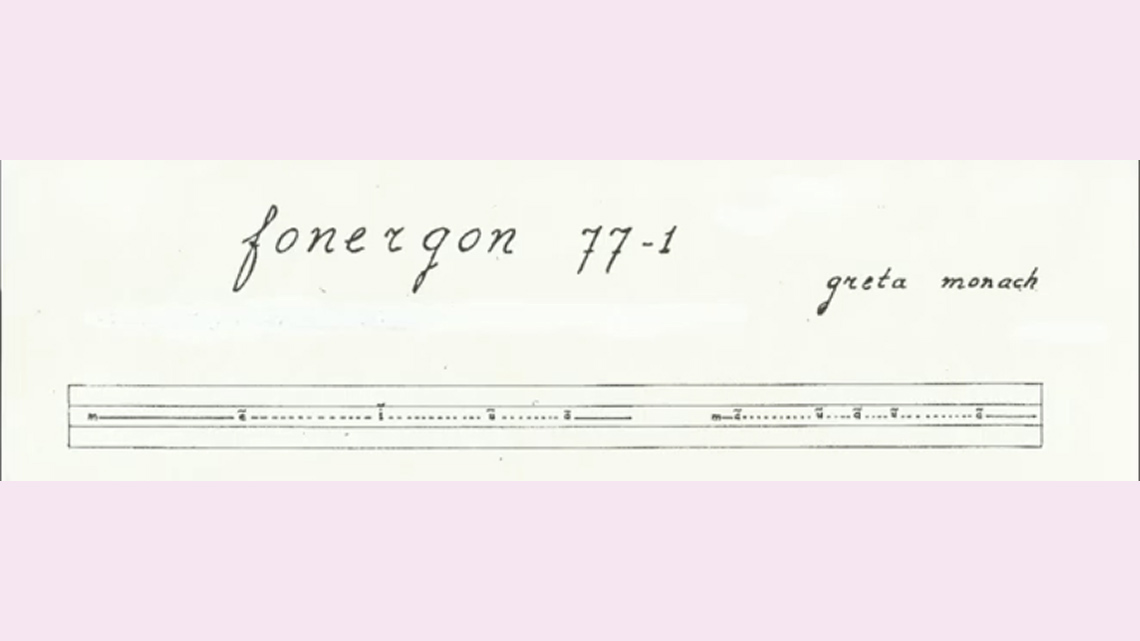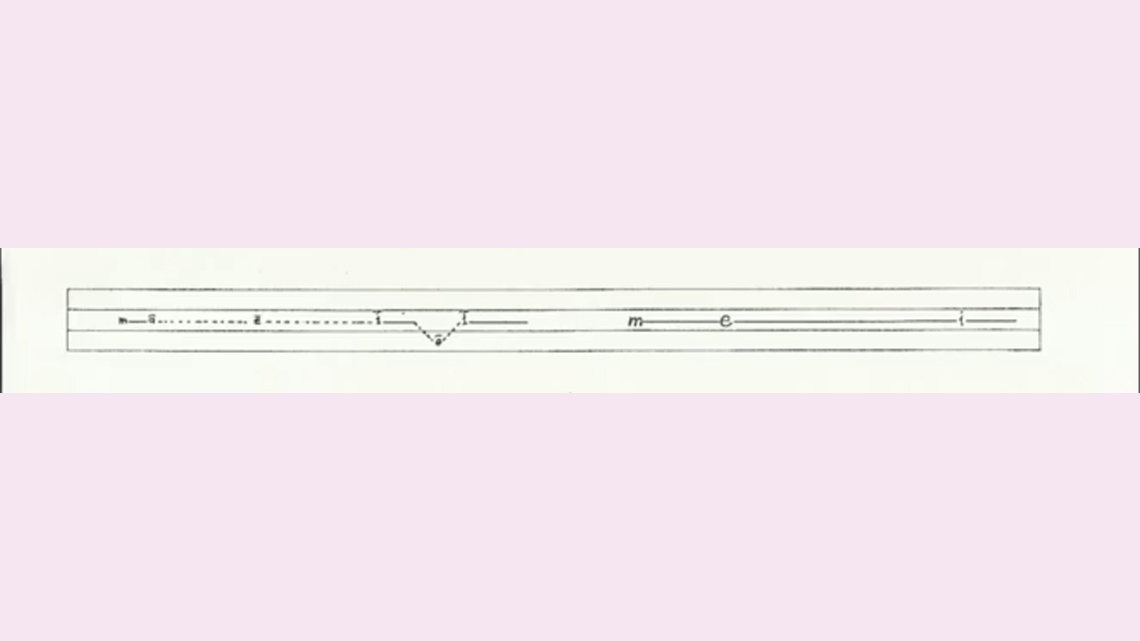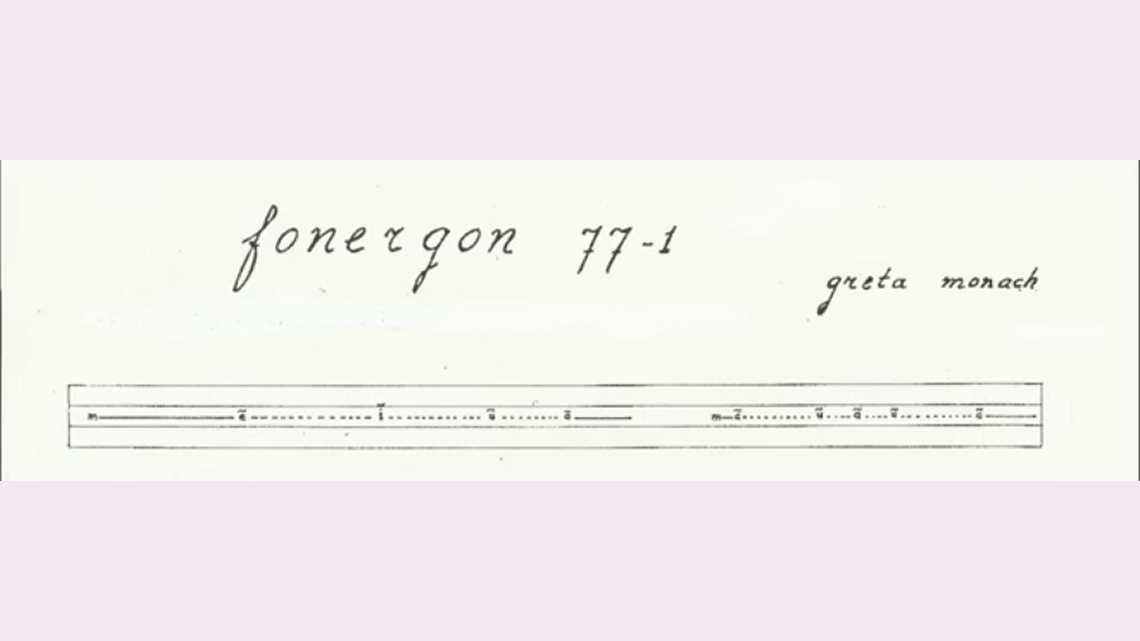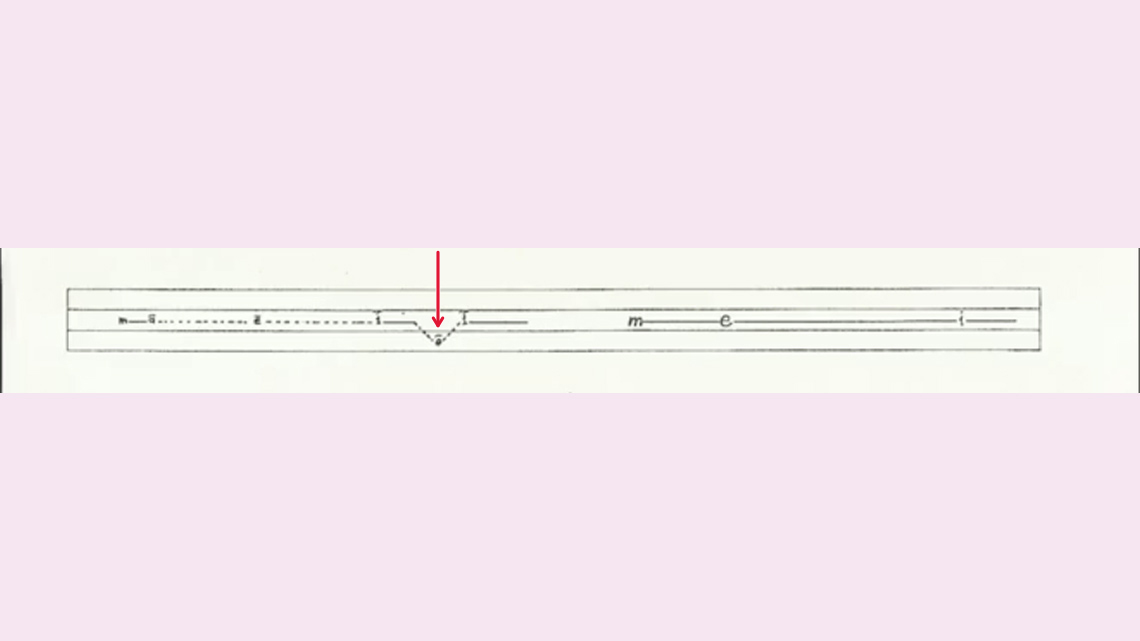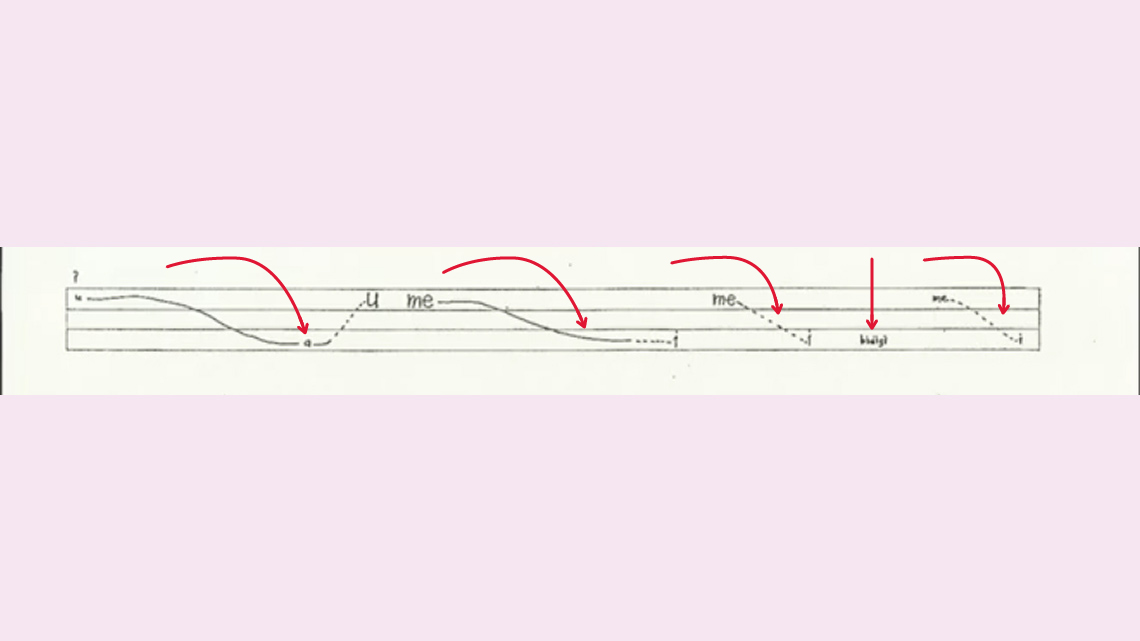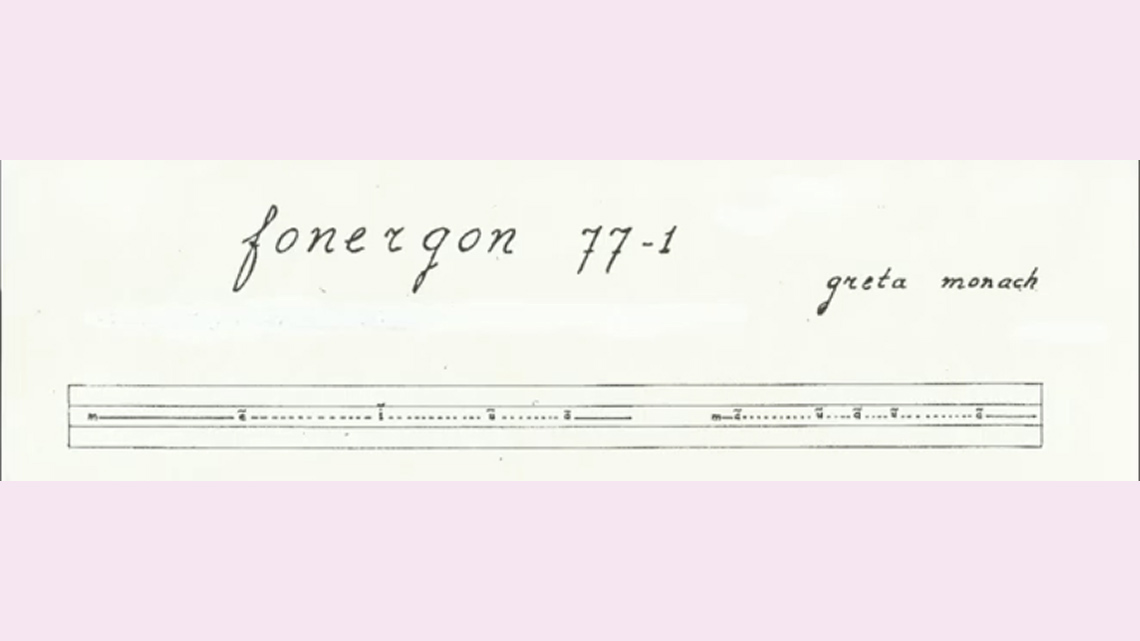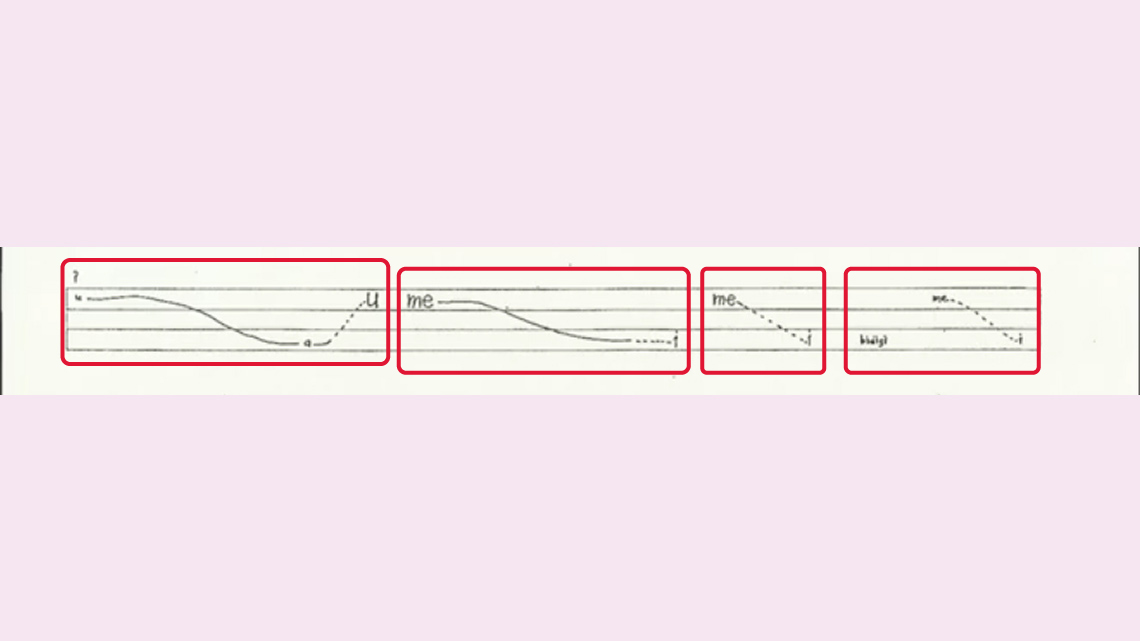Minds On
Today’s vocabulary
Press the following tabs to access today’s vocabulary.
Sound poetry is created to emphasize specific sounds instead of words.
The element of music that relates to the highness or lowness of a tone or sound.
The level of softness or loudness, or intensity. Some fundamental concepts related to this element are: crescendo, decrescendo, forte (f – loud), fortissimo (ff – very loud), mezzo forte (mf – moderately loud), piano (p – soft), pianissimo (pp – very soft), mezzo piano (mp – moderately soft).
Letters of the alphabet such as C, F, K, L, M, P, Z and more.
Letters of the alphabet such as A, E, I, O, and U.
Let’s get started
Notice and wonder
Access the following video to explore a musical excerpt from the piece “Fonergon 77-1”, written and performed by Greta Monach.
Student Success
Think-Pair-Share
What did you notice about this performance? Is it similar or different from other performances that you have experienced?
Did the performance include instruments or vocals?
How did the performance make you feel?
Record your thoughts using a method of your choice. If possible, share with a partner.
Action
Get ready, get set…
Sound poetry

Two teachers talking. The first teacher says: The performance in Minds On seemed very different from a traditional music performance. What is this type of performance called? The second teacher responds: It’s called sound poetry.
Greta Monach’s “Fonergon 77-1” is just one example of sound poetry, which is a type of poem that is recorded on a modified musical score. Sound poetry is created to emphasize specific sounds instead of words. It has been developed over the late 19th and early 20th century and became more popular through the Dadaist movement.
What’s the Dadaist movement?
Dada was an art movement created as a response to the First World War. The art, poetry, and performance created by dada artists often challenges traditional ideas and causes the audience to question and think differently about the topic. In a way, the Dada movement was a form of protest and discovery.
With sound poetry, Dada artists were interested in breaking down language into its sounds and then putting those sounds together in a new way. Some sound poetry uses nonsense words, while others focus on separating sounds and exploring them individually. Each performance of a sound poem is different because it is based on the individual’s interpretation of the written instructions.
Greta Monach
Greta Monach (1928-2018) was a Dutch sound poet. She took inspiration from abstract art in creating sound poetry. In abstract art, an artist might take the natural form of an object, break it apart, simplify it, and reimagine it. While the art itself might be inspired by a person or thing, it does not recognize that person or thing. In the same way, Greta Monach approached sound poetry by isolating specific sounds in words and then putting them together in new ways.
Press ‘Explore’ to learn more about abstract art.
Abstract art achieves its effect by simplifying the elements of design (e.g., line, shape and form, space, colour, texture, and value) of images. While people and things are often unrecognizable in abstract art, they are the inspiration behind the simplified shapes and forms.
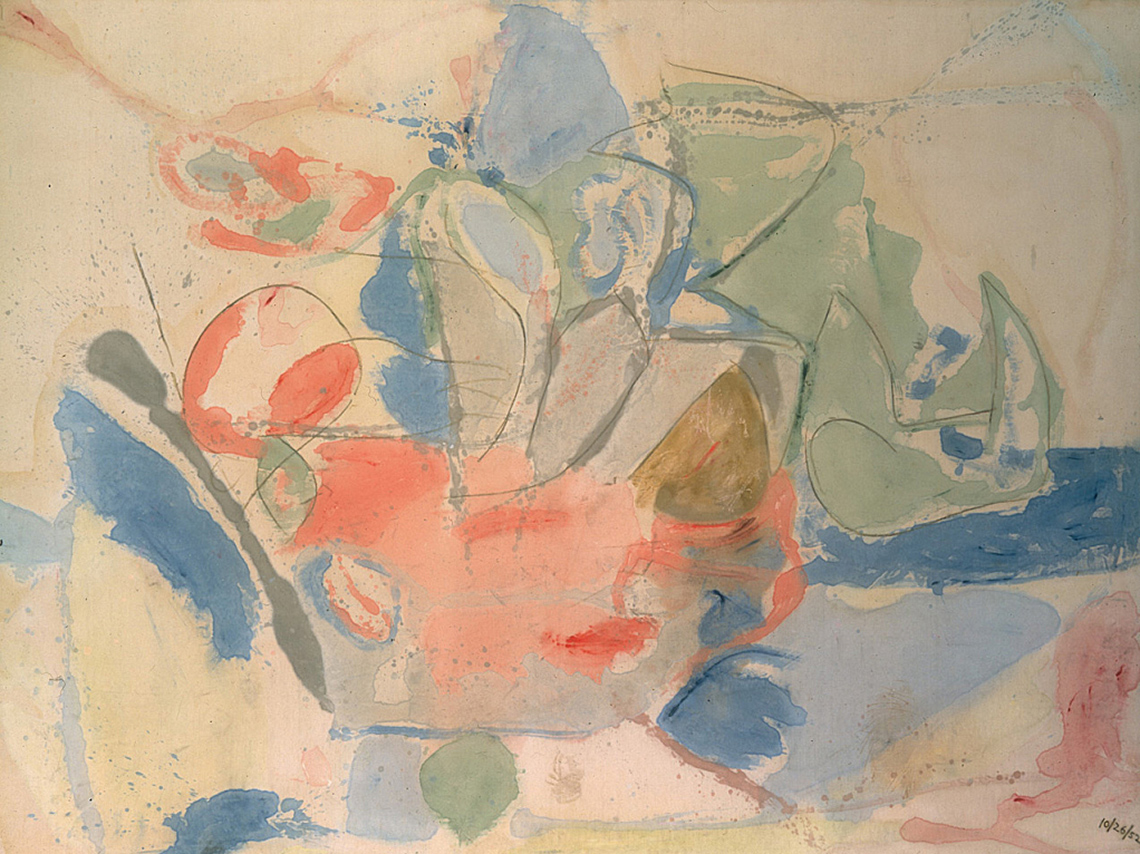
In Mountains and Sea, Helen Frankenthaler uses organic shapes and transparent colours in warm and cool tones to represent mountains and the sea.
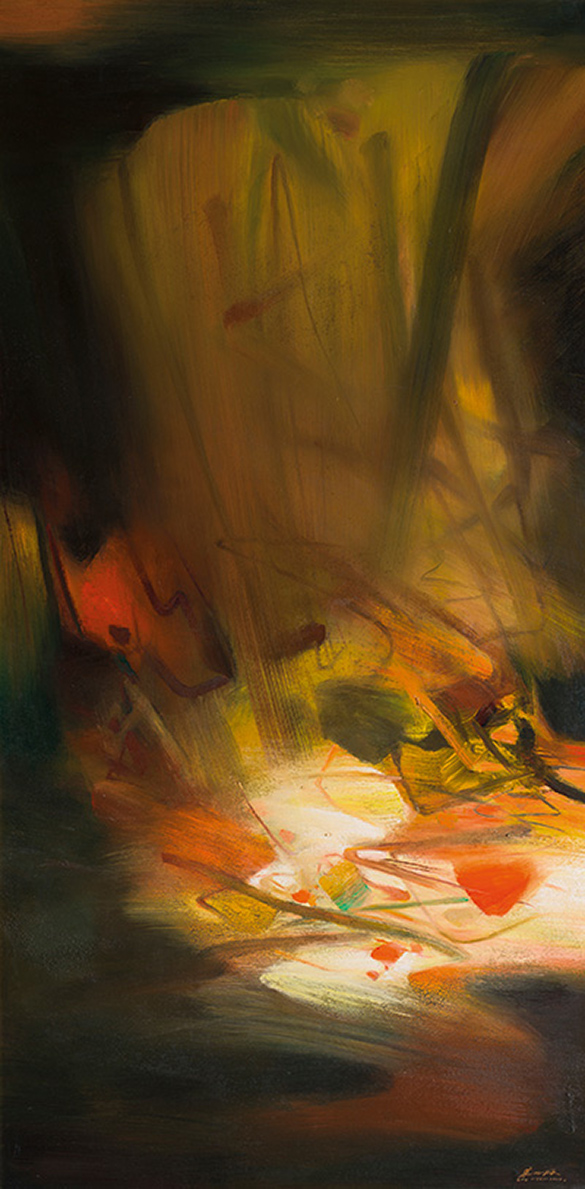
In Autumn on May 1, Chu Teh-Chun incorporates light and dark, vibrant hues of orange and yellow and then darker shades of brown and black to create a feeling of the autumn season.
Greta Monach was interested in the sound and shape of the poem, rather in using specific words to communicate meaning. She selected specific sounds and letters and then considered how to enter them onto the score to provide instructions about how it might be performed.
How is sound poetry organized?
Sound poetry is organized on a staff that resembles a traditional music staff. While a musical staff in a traditional score has five lines, a sound poetry score includes a staff with four lines.
Some poets will compose a poem, which is meant to be performed by a single voice, while others compose their poetry to be performed by a quartet.

Two teachers talking. The first teacher says: What is included in a sound poetry score? The second teacher responds: Let’s explore Greta Monach’s “Fonergon 77-1” to learn more!
“Fonergon 77-1”
Let’s revisit Greta Monach’s “Fonergon 77-1”. We will consider the features of the sound poetry score and then the specific cues that Greta Monach included to guide performance.
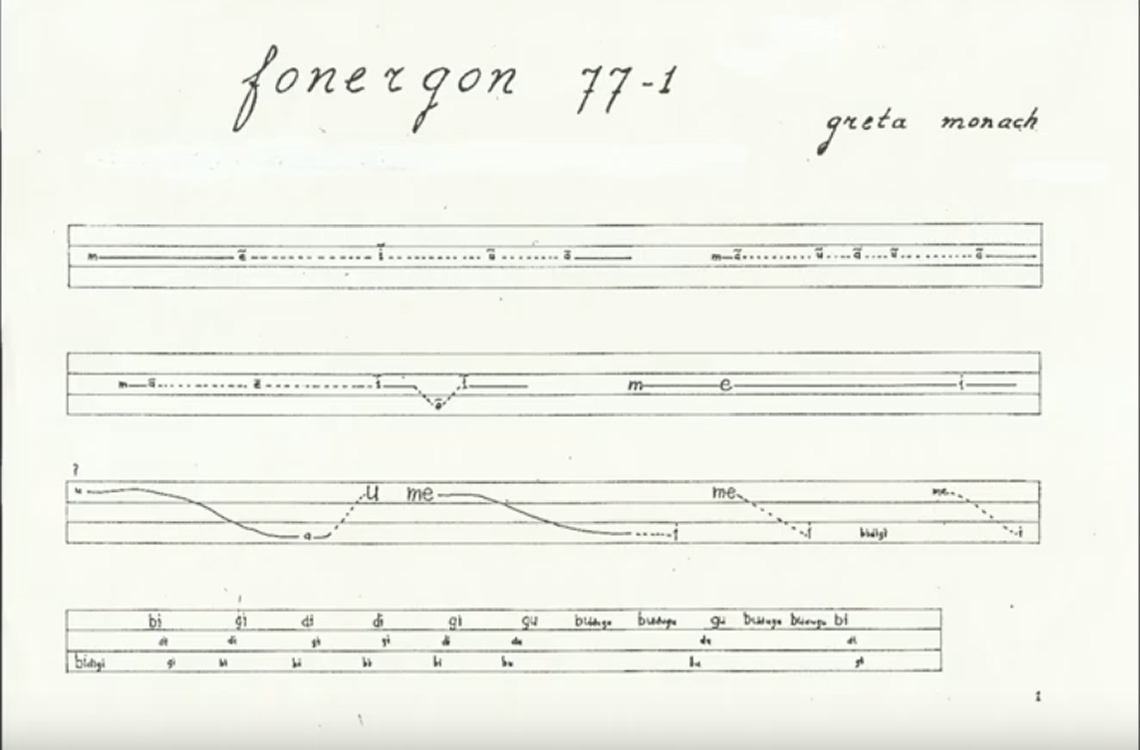
Four-line staff
The musical staff in a traditional score has five lines whereas this staff has 4. It does not include a key signature or time signature. This allows the person who performs the poem flexibility. In this way, each time a sound poem is performed by a different individual, the performance and experience for the audience changes.
The score is read from left to right, and when a sound stops, the letter and the connecting lines stop as well, indicating a pause or rest before the next sound is made.
Sounds
This score does not have notes, but instead, uses letters. Monach uses a combination of consonants (e.g., m, b, d, g) and vowel sounds (e.g., a, e, i, o, u).
Explore the following images to learn more about how Monach connects sounds in the “Fonergon 77-1”.
Pitch
In a traditional score, music notes become higher in pitch as they move up and lower as they move down. In the sound poetry score, although there are a different number of lines, the pitch for each sound becomes higher as the sounds move up the staff and lower as they move down the staff.
Explore the following images to learn more about pitch in the “Fonergon 77-1”.
Dynamics
The size of the letters indicates how loud or soft the sound is. The larger the letter, the louder the sound.
Press ‘Dynamics’ to learn more about dynamics and other expressive markings.

There is a table entitled "Dynamics and Other Expressive Markings." There are three columns entitled "Symbols," "Name," and "Meaning." The first row has the symbol "pp," which is named "pianissimo," and means "very soft." The second row has the symbol, "p," which is named "piano," and means "soft." The third row has the symbol "mp," which is named "mezzo piano," and means "medium soft." The fourth row has the symbol "mf," which is named "mezzo forte," and means "medium loud." The fifth row has the symbol "f," which is named "forte," and means "loud." The sixth row has the symbol "ff," which is named "fortissimo," and means "very loud." The seventh row has a symbol that starts on the left with two horizontal lines meeting at a point and then opening out and away from each other at an increasing angle. This symbol is named "crescendo" and means "gradually getting louder." The eighth row has a symbol that is the opposite of the symbol in the seventh row. It starts on the left with two horizontal lines that are angled downward until they meet on the right at a point. This symbol is named "decrescendo" and means "gradually getting softer." The ninth row has the symbol "fp," which is named "fortepiano," and means "loud, then immediately soft." The tenth row has the symbol "sfz," which is named "submit forzando," and means "suddenly, with force."
Performance
Now that we have gone through each bar of the composition excerpt “Fonergon 77-1” consider how the excerpt might be performed. How might you describe the performance for each bar?
One way to describe the performance would be to put together different cues on the score.
Let’s examine the excerpt of Monach’s “Fonergon 77-1” below once more. Think about the letters (sounds), size (dynamics), placement (pitch), and pauses (rests).
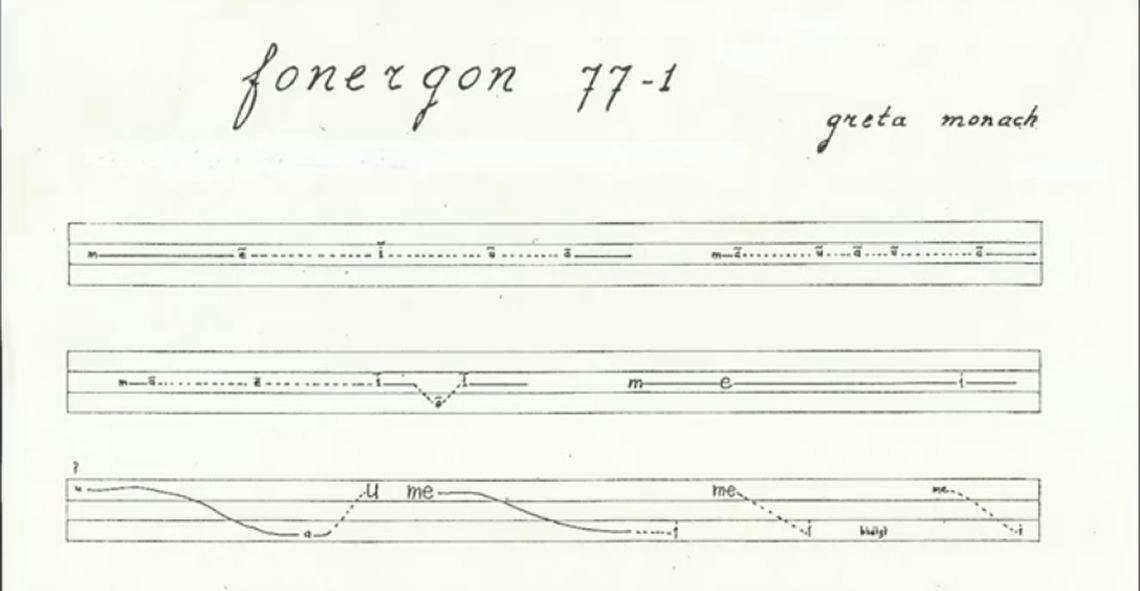
Press ‘Example’ to explore a few ways you could describe the performance cues.
|
Bar 1 |
Description: The excerpt begins quietly at piano. It starts at medium pitch, which moves from “m—eu—ee—oo—ah.” There is a pause or rest, and then at the same medium pitch, the phrase continues as “m-ah—oo-ah-oo—ah.” |
|
Bar 2 |
Description: The phrase begins quietly at piano. It starts at medium pitch with “m-ah—eu—ee.” Then, the pitch moves down to the lowest pitch, making the sound “oh,” and then back up to a medium pitch, making the sound “ee.” There is a pause or rest. The volume increases in the next phrase to mezzo piano or moderately quiet. The pitch stays at medium from “me—ee—eee.” |
|
Bar 3 |
Description: The phrase starts at piano or quietly with the sound “oo” at the highest pitch. The pitch slowly transitions down to “ah.” Then, it goes back up quickly to “oo” at the highest pitch, transitioning from piano to mezzo forte. There is a pause or rest. The next phrase starts with “me” at the highest pitch and at mezzo forte, moving down slowly to “ee” at the lowest pitch and mezzo piano. There is a pause or rest. The next phrase starts with the sound “me” at the highest pitch and mezzo piano. It moves quickly down to “i” at the lowest pitch at mezzo piano. There is a pause or rest. The next phrase is “bidigi” at the lowest pitch and at piano. There is a pause or rest. The next phrase starts with “me” at the highest pitch and at piano and moves down quickly to the “i” at the lowest pitch and at piano. |
Go!
Your turn!
Describe how you might perform the last bar of the excerpt from “Fonergon 77-1”. You may reference the image and video below.
Explore the following image of the last bar.

There is a sound poetry score with a staff with four lines. On the score are handwritten letters that are organized in 13 phrases. The first phrase has the letters “bidigi” at the bottom of the staff. The second phrase starts at the top of the staff with the letters “bi” and then moves down the staff with “di” in the middle and “gi” at the bottom in smaller letters. The third phrase starts at the bottom of the staff with “bi” in small letters” and then moves up the staff with “di” in the midde” and “gi” at the top in larger letters. The fourth and fifth phrases are the same. Starting at the bottom are the letters “bi,” which are small. Above them are the letters “gi,” which are also small. The letters “di” are larger and located above “gi.” The sixth phrase also starts at the bottom with the letters “bi” in smaller writing, moves up with the letters “di,” which are also in smaller writing, and then up to the letters “gi” in larger writing. The seventh phrase starts at the bottom with the letters “bu” in smaller writing, moves up with the letters “du”, which are also in smaller writing, and then up to the letters “gu” in larger writing. The eighth and ninth phrases are the same. The letters “budugu” are written together at the top of the staff. The tenth phrase is the same as the seventh. It starts at the bottom with the letters “bu” in smaller writing, moves up with the letters “du,” which are also in smaller writing, and then up to the letters “gu” in larger writing. The eleventh and twelfth phrases are the same as the eighth and ninth phrases. The letters “budugu” are written together at the top of the staff. The score ends on the thirteenth phrase, which has the larger letters “bi” at the top of the staff, moves down to “di” in smaller letters, and finally down to “gi” in smaller letters.
Access this video clip of the excerpt from “Fonergon 77-1”.
When you are ready, complete the Fonergon 77-1 Performance Cues organizer in your notebook or using the following fillable and printable document. If you would like, you can use speech-to-text or audio recording tools to record your thoughts. Be sure to include as much detail as possible and consider:
- use of letters
- pitch
- dynamics
- pauses or rests
|
Bar 4 |
Description: |
Press the ‘Activity’ button to access “Fonergon 77-1” Performance Cues organizer.
Consolidation
Putting it all together

Let’s review what we’ve learned about song poetry!
Select the correct answer, then press ‘Check Answer’ to see how you did.
Pause and Reflect
Planning a song poetry performance
Describe your experience of planning your performance.
- What clues did you use from the score to create your description?
- How is Greta Monach’s “Fonergon 77-1” similar and different to other written forms of music?
- How might your interpretation and/or performance of Greta Monach’s “Fonergon 77-1” be different from another performer’s interpretation and/or performance?
Record your ideas in a method of your choice.
Reflection
As you read the following descriptions, select the one that best describes your current understanding of the learning in this activity. Press the corresponding button once you have made your choice.
I feel…
Now, expand on your ideas by recording your thoughts using a voice recorder, speech-to-text, or writing tool.
When you review your notes on this learning activity later, reflect on whether you would select a different description based on your further review of the material in this learning activity.
